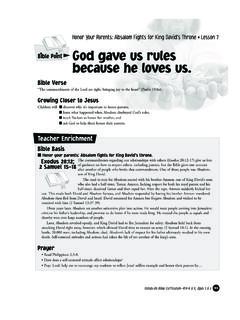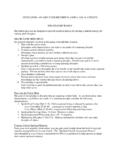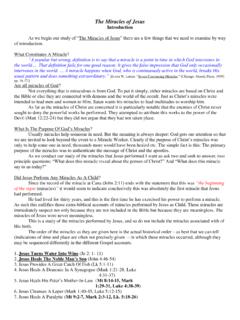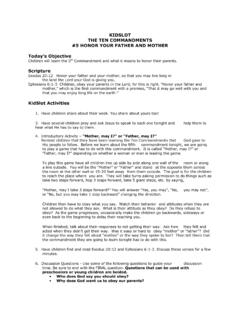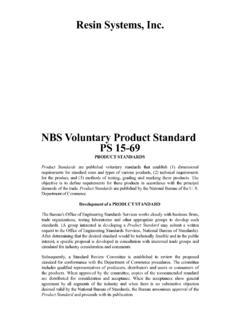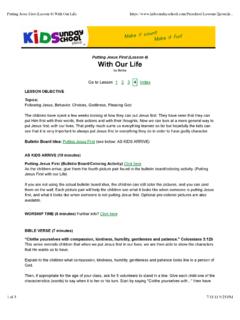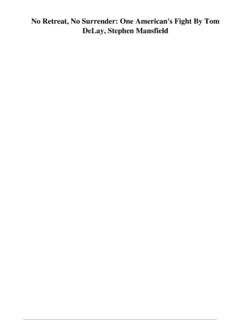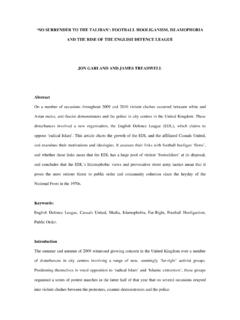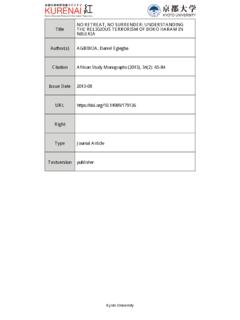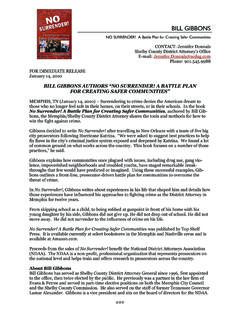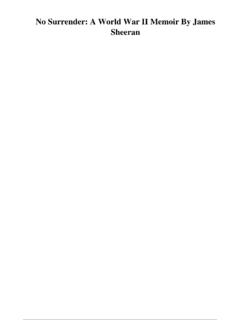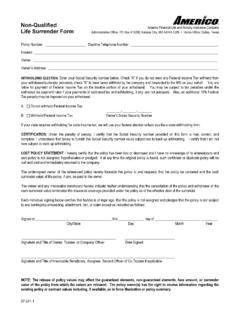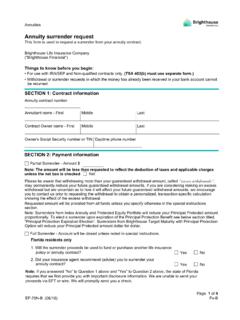Transcription of STORY OF Hiroo Onoda - Clover Sites
1 STORY OF Hiroo Onoda In 1944, Lt. Hiroo Onoda was sent by the Japanese army to the remote Philippine island of Lubang. His mission was to conduct guerrilla warfare during World War II. Unfortunately, he was never officially told the war had ended; so for 29 years, Onoda continued to live in the jungle, ready for when his country would again need his services and information. Eating coconuts and bananas and deftly evading searching parties he believed were enemy scouts, Onoda hid in the jungle until he finally emerged from the dark recesses of the island on March 19, 1972.
2 Called to Duty Hiroo Onoda was 20 years-old when he was called up to join the army. At the time, he was far from home working at a branch of the Tajima Yoko trading company in Hankow (now Wuhan), China. After passing his physical, Onoda quit his job and returned to his home in Wakayama, Japan in August of 1942 to get into top physical condition. In the Japanese army, Onoda was trained as an officer and was then chosen to be trained at an Imperial Army intelligence school. At this school, Onoda was taught how to gather intelligence and how to conduct guerrilla warfare.
3 In the Philippines On December 17, 1944, Lt. Hiroo Onoda left for the Philippines to join the Sugi Brigade (the Eighth Division from Hirosaki). Here, Onoda was given orders by Major Yoshimi Taniguchi and Major Takahashi. Onoda was ordered to lead the Lubang Garrison in guerrilla warfare. As Onoda and his comrades were getting ready to leave on their separate missions, they stopped by to report to the division commander. The division commander ordered: You are absolutely forbidden to die by your own hand. It may take three years, it may take five, but whatever happens, we'll come back for you.
4 Until then, so long as you have one soldier, you are to continue to lead him. You may have to live on coconuts. If that's the case, live on coconuts! Under no circumstances are you [to] give up your life Onoda took these words more literally and seriously than the division commander could ever have meant them. On Lubang Once on the island of Lubang, Onoda was supposed to blow up the pier at the harbor and destroy the Lubang airfield. Unfortunately, the garrison commanders, who were worried about other matters, decided not to help Onoda on his mission and soon the island was overrun by the Allies.
5 The remaining Japanese soldiers, Onoda included, retreated into the inner regions of the island and split up into groups. As these groups dwindled in size after several attacks, the remaining soldiers split into cells of 3 and 4 people. There were four people in Onoda 's cell: Corporal Shoichi Shimada (age 30), Private Kinshichi Kozuka (age 24), Private Yuichi Akatsu (age 22), and Lt. Hiroo Onoda (now age 23). They lived very close together, with very limited supplies: the clothes they were wearing, a small amount of rice, and each had a gun with limited ammunition.
6 Rationing the rice was difficult and caused fights, but they supplemented it with coconuts and bananas. Every once in a while, they were able to kill a civilian's cow for food. The cells would save up their energy and use guerrilla tactics to fight in skirmishes. Other cells were captured or were killed while Onoda 's continued to fight from the interior. The War is Out! Onoda first saw a leaflet that claimed the war was over in October 1945. When another cell had killed a cow, they found a leaflet left behind by the islanders which read: "The war ended on August 15.
7 Come down from the mountains!"2 But as they sat in the jungle, the leaflet just didn't seem to make sense, for another cell had just been fired upon a few days ago. If the war were over, why would they still be under attack? No, they decided, the leaflet must be a clever ruse by the Allied propagandists. Again, the outside world tried to contact the survivors living on the island by dropping leaflets out of a Boeing B-17 near the end of 1945. Printed on these leaflets was the surrender order from General Yamashita of the Fourteenth Area Army. Having already hidden on the island for a year and with the only proof of the end of the war being this leaflet, Onoda and the others scrutinized every letter and every word on this piece of paper.
8 One sentence in particular seemed suspicious, it said that those who surrendered would receive "hygienic succor" and be "hauled" to Japan. Again, they believed this must be an Allied hoax. Leaflet after leaflet was dropped. Newspapers were left. Photographs and letters from relatives were dropped. Friends and relatives spoke out over loudspeakers. There was always something suspicious, so they never believed that the war had really ended. Over the Years Year after year, the four men huddled together in the rain, searched for food, and sometimes attacked villagers.
9 They fired on the villagers because, "We considered people dressed as islanders to be enemy troops in disguise or enemy spies. The proof that they were was that whenever we fired on one of them, a search party arrived shortly afterward."3 It had become a cycle of disbelief. Isolated from the rest of the world, everyone appeared to be the enemy. In 1949, Akatsu wanted to surrender . He didn't tell any of the others; he just walked away. In September 1949 he successfully got away from the others and after six months on his own in the jungle, Akatsu surrendered.
10 To Onoda 's cell, this seemed like a security leak and they became even more careful of their position. In June 1953, Shimada was wounded during a skirmish. Though his leg wound slowly got better (without any medicines or bandages), he became gloomy. On May 7, 1954, Shimada was killed in a skirmish on the beach at Gontin. For nearly 20 years after Shimad's death, Kozuka and Onoda continued to live in the jungle together, awaiting the time when they would again be needed by the Japanese army. Per the division commanders instructions, they believed it was their job to remain behind enemy lines, reconnoiter and gather intelligence to be able to train Japanese troops in guerrilla warfare in order to regain the Philippine islands.

